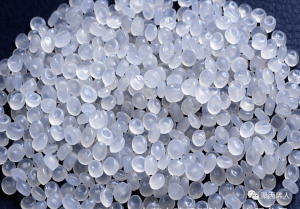Recently, market participants predicted that the supply and demand fundamentals of the global polypropylene (PP) market will encounter many challenges in the second half of 2022, mainly including the new crown pneumonia epidemic in Asia, the start of the hurricane season in the Americas, and the conflict between Russia and Ukraine. In addition, the commissioning of new production capacity in Asia may also affect the PP market structure.
Asia’s PP oversupply concerns.Market participants from S&P Global said that due to the oversupply of polypropylene resin in the Asian market, production capacity will continue to expand in the second half of 2022 and beyond, and the epidemic is still affecting demand. The Asian PP market may face challenges.
For the East Asian market, S&P Global predicts that in the second half of this year, a total of 3.8 million tons of new PP production capacity will be put into use in East Asia, and 7.55 million tons of new production capacity will be added in 2023.
Market sources pointed out that amid continued port congestion in the region, several production plants have been delayed due to epidemic restrictions, raising doubts about the reliability of capacity commissioning. East Asian traders will continue to see export opportunities to South Asia and South America if oil prices remain firm, the sources said. Among them, China’s PP industry will change the global supply pattern in the short and medium term, and its speed may be faster than expected. China could eventually overtake Singapore as the third largest PP exporter in Asia and the Middle East, given that Singapore has no plans to expand capacity this year.
North America is concerned about falling propylene prices. The U.S. PP market in the first half of the year was largely plagued by ongoing inland logistics problems, a lack of spot offers and uncompetitive export pricing. The US domestic market and export PP will face uncertainty in the second half of the year, and market participants are also focusing on the possible impact of the hurricane season in the region. Meanwhile, while U.S. demand has steadily digested most PP resins and kept contract prices stable, market participants are still discussing price adjustments as spot prices for polymer-grade propylene slip and resin buyers push for price cuts.
Nonetheless, North American market participants remain cautious about the increase in supply. New production in North America last year did not make the region more competitive with traditional importing regions such as Latin America due to lower external PP prices. In the first half of this year, due to force majeure and the overhaul of multiple units, there were few spot offers from suppliers.
European PP market hit by upstream
For the European PP market, S&P Global said that upstream price pressure seems to continue to cause uncertainty in the European PP market in the second half of the year. Market participants are generally concerned that downstream demand may still be sluggish, with weak demand in the automotive and personal protective equipment industries. The continued increase in the market price of recycled PP may benefit the demand for PP resin, as buyers tend to turn to cheaper virgin resin materials. The market is more concerned about rising upstream costs than downstream. In Europe, fluctuations in the contract price of propylene, a key raw material, pushed up the price of PP resin throughout the first half of the year, and companies made efforts to pass on the increase in raw material prices to the downstream. In addition, logistical difficulties and high energy prices are also driving prices.
Market participants said that the Russian-Ukrainian conflict will continue to be a key factor in changes in the European PP market. In the first half of the year, there was no Russian PP resin material supply in the European market, which provided some space for traders from other countries. In addition, S&P Global believes that the Turkish PP market will continue to experience severe headwinds in the second half of the year due to economic concerns.
Post time: Sep-28-2022



